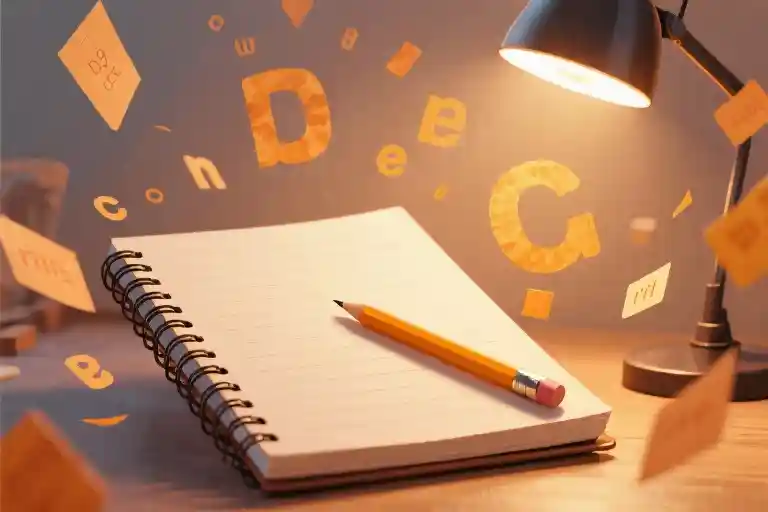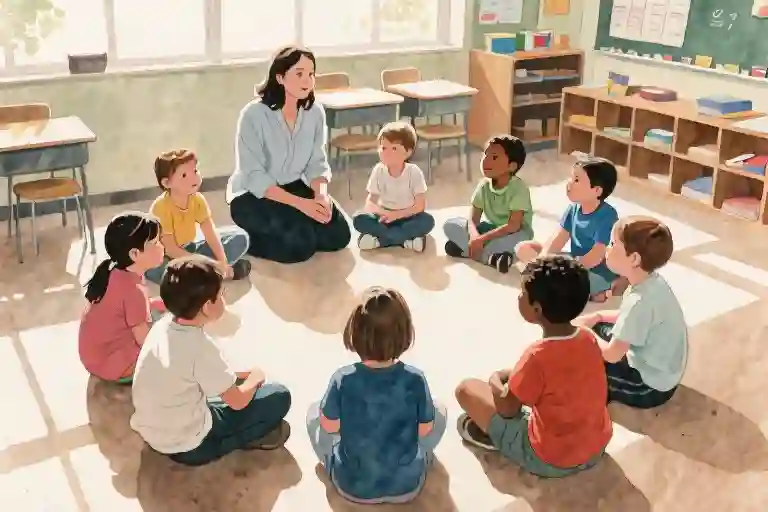The cursor blinked at me from the last paragraph of what should have been a routine 10th-grade history essay. At first glance, the transitions were seamless, the arguments logically structured – almost too logically. Then came that telltale phrasing, the kind of syntactically perfect yet oddly impersonal construction that makes your teacher instincts tingle. Three sentences later, I caught myself sighing aloud in my empty classroom: ‘Not another one.’
This wasn’t my first encounter with the AI-generated paper phenomenon this semester, but each discovery still follows the same emotional trajectory. There’s the initial professional admiration (‘This reads better than Jason’s usual work’), quickly followed by suspicion (‘Wait, since when does Jason use ‘furthermore’ correctly?’), culminating in that particular brand of educator exhaustion reserved for academic dishonesty cases. The irony? Dealing with the aftermath often feels more draining than the moral outrage over the cheating itself.
What makes these cases uniquely frustrating isn’t even the student’s actions – after fifteen years teaching, I’ve developed a resigned understanding of adolescent risk-taking. It’s the administrative avalanche that follows: combing through revision histories like a digital archaeologist, documenting suspicious timestamps where entire paragraphs materialized fully formed, preparing evidence for what will inevitably become a multi-meeting ordeal. The process turns educators into forensic analysts, a role none of us signed up for when we chose this profession.
The real kicker? These AI-assisted papers often display a peculiar duality – technically proficient yet utterly soulless. They’re the uncanny valley of student writing: everything aligns grammatically, but the voice rings hollow, like hearing a familiar song played on perfect yet emotionless synthesizers. You find yourself missing the charming imperfections of authentic student work – the occasional rambling aside, the idiosyncratic word choices, even those stubborn comma splices we’ve all learned to tolerate.
What keeps me up at night isn’t the cheating itself, but the creeping normalization of these interactions. Last month, a colleague mentioned catching six AI-generated papers in a single batch – and that’s just the obvious cases. We’ve entered an era where the default assumption is shifting from ‘students write their own work’ to ‘students might be outsourcing their thinking,’ and that fundamental change demands more from educators than just learning to spot AI writing patterns. It requires rethinking everything from assignment design to our very definition of academic integrity.
The administrative toll compounds with each case. Where catching a plagiarized paper once meant a straightforward comparison to source material, AI detection demands hours of digital sleuthing – analyzing writing style shifts mid-paragraph, tracking down earlier drafts that might reveal the human hand behind the work. It’s become common to hear teachers joking (with that particular humor that’s 90% exhaustion) about needing detective badges to complement our teaching credentials.
Yet beneath the frustration lies genuine pedagogical concern. When students substitute AI for authentic engagement, they’re not just cheating the system – they’re cheating themselves out of the messy, rewarding struggle that actually builds critical thinking. The cognitive dissonance is palpable: we want to prepare students for a tech-saturated world, but not at the cost of their ability to think independently. This tension forms the core of the modern educator’s dilemma – how to navigate an educational landscape where the tools meant to enhance learning can so easily short-circuit it.
When Homework Reads Like a Robot: A Teacher’s Dilemma in Spotting AI Cheating
It was the third paragraph that tipped me off. The transition was too smooth, the vocabulary slightly too polished for a sophomore who struggled with thesis statements just last week. As I kept reading, the telltale signs piled up: perfectly balanced sentences devoid of personality, arguments that circled without deepening, and that uncanny valley feeling when prose is technically flawless but emotionally hollow. Another paper bearing the lifeless, robotic mark of the AI beast had landed on my desk.
The Hallmarks of AI-Generated Work
After reviewing hundreds of suspected cases this academic year, I’ve developed what colleagues now call “the AI radar.” These are the red flags we’ve learned to watch for:
- Polished but shallow writing that mimics academic tone without substantive analysis
- Template-like structures following predictable “introduction-point-proof-conclusion” patterns
- Unnatural transitions between ideas that feel glued rather than developed
- Consistent verbosity where human writers would vary sentence length
- Missing personal touches like informal phrasing or idiosyncratic examples
The most heartbreaking instances involve previously engaged students. Last month, a gifted writer who’d produced thoughtful all-semester submissions turned in an AI-generated final essay. When I checked the Google Doc revision history, the truth appeared at 2:17 AM – 1,200 words pasted in a single action, overwriting three days’ worth of legitimate drafts.
The Emotional Toll on Educators
Discovering AI cheating triggers a peculiar emotional cascade:
- Initial understanding: Teenagers face immense pressure, and AI tools are readily available. Of course some will take shortcuts.
- Professional disappointment: Especially when it’s a student who showed promise through authentic work.
- Procedural frustration: The real exhaustion comes from what happens next – the documentation, meetings, and bureaucratic processes.
What surprised me most wasn’t the cheating itself, but how the administrative aftermath drained my enthusiasm for teaching. Spending hours compiling evidence means less time crafting engaging lessons. Disciplinary meetings replace office hours that could have mentored struggling students. The system seems designed to punish educators as much as offenders.
A Case That Changed My Perspective
Consider Maya (name changed), an A-student who confessed immediately when confronted about her AI-assisted essay. “I panicked when my grandma got sick,” she explained. “The hospital visits ate up my writing time, and ChatGPT felt like my only option.” Her raw first draft, buried in the document’s version history, contained far more original insight than the “perfected” AI version.
This incident crystallized our core challenge: When students perceive AI as a safety net rather than a cheat, our response must address both academic integrity and the pressures driving them to automation. The next chapter explores practical detection methods, but remember – identifying cheating is just the beginning of a much larger conversation about education in the AI age.
From Revision History to AI Detectors: A Teacher’s Field Guide
That moment when you’re knee-deep in student papers and suddenly hit a passage that feels… off. The sentences are technically perfect, yet somehow hollow. Your teacher instincts kick in – this isn’t just good writing, this is suspiciously good. Now comes the real work: proving it.
The Digital Paper Trail
Google Docs has become an unexpected ally in detecting AI cheating. Here’s how to investigate:
- Access Revision History (File > Version history > See version history)
- Look for Telltale Patterns:
- Sudden large text insertions (especially mid-document)
- Minimal keystroke-level edits in “polished” sections
- Timestamp anomalies (long gaps followed by perfect paragraphs)
- Compare Writing Styles: Note shifts between obviously human-written sections (with typos, revisions) and suspiciously clean portions
Pro Tip: Students using AI often forget to check the metadata. A paragraph appearing at 2:17AM when the student was actively messaging friends at 2:15? That’s worth a conversation.
When You Need Heavy Artillery
For cases where manual checks aren’t conclusive, these tools can help:
| Tool | Best For | Limitations | Accuracy* |
|---|---|---|---|
| Turnitin | Institutional integration | Requires school adoption | 82% |
| GPTZero | Quick single-page checks | Struggles with short texts | 76% |
| Originality.ai | Detailed reports | Paid service | 88% |
*Based on 2023 University of Maryland benchmarking studies
The Cat-and-Mouse Game
AI writing tools are evolving rapidly. Some concerning trends we’re seeing:
- Humanization Features: Newer AI can intentionally add “imperfections” (strategic typos, natural hesitation markers)
- Hybrid Writing: Students paste AI content then manually tweak to evade detection
- Metadata Scrubbing: Some browser extensions now clean revision histories
This isn’t about distrusting students – it’s about maintaining meaningful assessment. As one colleague put it: “When we can’t tell human from machine work, we’ve lost the thread of education.”
Making Peace with Imperfect Solutions
Remember:
- False Positives Happen: Some students genuinely write in unusually formal styles
- Context Matters: A single suspicious paragraph differs from an entire AI-generated paper
- Process Over Perfection: Document your concerns objectively before confronting students
The goal isn’t to become cybersecurity experts, but to protect the integrity of our classrooms. Sometimes the most powerful tool is simply asking: “Can you walk me through how you developed this section?”
Rethinking Assignments in the Age of AI
Walking into my classroom after grading another batch of suspiciously polished essays, I had an epiphany: we’re fighting the wrong battle. Instead of playing detective with AI detection tools, what if we redesigned assignments to make AI assistance irrelevant? This shift from punishment to prevention has transformed how I approach assessment – and the results might surprise you.
The Power of Voice: Why Oral Presentations Matter
Last semester, I replaced 40% of written assignments with in-class presentations. The difference was immediate:
- Authentic expression: Hearing students explain concepts in their own words revealed true understanding (or lack thereof)
- Critical thinking: Q&A sessions exposed who could apply knowledge versus recite information
- AI-proof: No chatbot can replicate a student’s unique perspective during live discussion
One memorable moment came when Jamal, who’d previously submitted generic AI-written papers, passionately debated the economic impacts of the Industrial Revolution using examples from his grandfather’s auto plant stories. That’s when I knew we were onto something.
Back to Basics: The Case for Handwritten Components
While digital submissions dominate modern education, I’ve reintroduced handwritten elements with remarkable results:
- First drafts: Requiring handwritten outlines or reflections before digital submission
- In-class writing: Short, timed responses analyzing primary sources
- Process journals: Showing incremental research progress
A colleague at Jefferson High implemented similar changes and saw a 30% decrease in suspected AI cases. “When students know they’ll need to produce work in person,” she noted, “they engage differently from the start.”
Workshop Wisdom: Teaching Students to Spot AI Themselves
Rather than lecturing about academic integrity, I now run workshops where:
- Students analyze anonymized samples (some AI-generated, some human-written)
- Groups develop “authenticity checklists” identifying hallmarks of human voice
- We discuss ethical AI use cases (like brainstorming vs. content generation)
This approach fosters critical digital literacy while reducing adversarial dynamics. As one student reflected: “Now I see why my ‘perfect’ ChatGPT essay got flagged – it had no heartbeat.”
Creative Alternatives That Engage Rather Than Restrict
Some of our most successful AI-resistant assignments include:
- Multimedia projects: Podcast episodes explaining historical events
- Community interviews: Documenting local oral histories
- Debate tournaments: Research-backed position defenses
- Hand-annotated sources: Physical texts with margin commentary
These methods assess skills no AI can currently replicate – contextual understanding, emotional intelligence, and original synthesis.
The Bigger Picture: Assessment as Learning Experience
What began as an anti-cheating measure has reshaped my teaching philosophy. By designing assignments that:
- Value process over product
- Celebrate individual perspective
- Connect to real-world applications
We’re not just preventing AI misuse – we’re creating richer learning experiences. As education evolves, our assessment methods must transform alongside it. The goal isn’t to outsmart technology, but to cultivate skills and knowledge that remain authentically human.
“The best defense against AI cheating isn’t better detection – it’s assignments where using AI would mean missing the point.” – Dr. Elena Torres, EdTech Researcher
When Technology Outpaces Policy: What Changes Does the Education System Need?
Standing in front of my classroom last semester, I realized something unsettling: our school’s academic integrity policy still referenced “unauthorized collaboration” and “plagiarism from printed sources” as primary concerns. Meanwhile, my students were submitting essays with telltale ChatGPT phrasing that our outdated guidelines didn’t even acknowledge. This policy gap isn’t unique to my school – a recent survey by the International Center for Academic Integrity found that 68% of educational institutions lack specific AI usage guidelines, leaving teachers like me navigating uncharted ethical territory.
The Policy Lag Crisis
Most schools operate on policy cycles that move at glacial speed compared to AI’s rapid evolution. While districts debate comma placement in their five-year strategic plans, students have progressed from copying Wikipedia to generating entire research papers with multimodal AI tools. This disconnect creates impossible situations where:
- Teachers become accidental detectives – We’re expected to identify AI content without proper training or tools
- Students face inconsistent consequences – Similar offenses receive wildly different punishments across departments
- Innovation gets stifled – Fear of cheating prevents legitimate uses of AI for skill-building
During our faculty meetings, I’ve heard colleagues express frustration about “feeling like we’re making up the rules as we go.” One English teacher described her department’s makeshift solution: requiring students to sign an AI honor code supplement. While well-intentioned, these piecemeal approaches often crumble when challenged by parents or administrators.
Building Teacher-Led Solutions
The solution isn’t waiting for slow-moving bureaucracies to act. Here’s how educators can drive change:
1. Form AI Policy Task Forces
At Lincoln High, we organized a cross-disciplinary committee (teachers, tech staff, even student reps) that:
- Created a tiered AI use rubric (allowed/prohibited/conditional)
- Developed sample syllabus language about generative AI
- Proposed budget for detection tools
2. Redefine Assessment Standards
Dr. Elena Rodriguez, an educational technology professor at Stanford, suggests: “Instead of policing AI use, we should redesign evaluations to measure what AI can’t replicate – critical thinking journeys, personal reflections, and iterative improvement.” Some actionable shifts:
| Traditional Assessment | AI-Resistant Alternative |
|---|---|
| Standardized essays | Process portfolios showing drafts |
| Take-home research papers | In-class debates with source analysis |
| Generic math problems | Real-world application projects |
3. Advocate for Institutional Support
Teachers need concrete resources, not just new policies. Our union recently negotiated:
- Annual AI detection tool subscriptions
- Paid training on identifying machine-generated content
- Legal protection when reporting suspected cases
The Road Ahead
As I write this, our district is finally considering its first official AI policy draft. The process has been messy – there are heated debates about whether AI detectors create false positives or if complete bans are even enforceable. But the crucial development? Teachers now have seats at the table where these decisions get made.
Perhaps the most hopeful sign came from an unexpected source: my students. When we discussed these policy changes in class, several admitted they’d prefer clear guidelines over guessing what’s acceptable. One junior put it perfectly: “If you tell us exactly how we can use AI to learn better without cheating ourselves, most of us will follow those rules.”
This isn’t just about catching cheaters anymore. It’s about rebuilding an education system where technology enhances rather than undermines learning – and that transformation starts with teachers leading the change.
When Technology Outpaces Policy: Rethinking Education’s Core Mission
That moment when you hover over the ‘submit report’ button after documenting yet another AI cheating case—it’s more than administrative fatigue. It’s the sinking realization that our current education system, built for a pre-AI world, is struggling to answer one fundamental question: If AI-generated content becomes undetectable, what are we truly assessing in our students?
The Assessment Paradox
Standardized rubrics crumble when ChatGPT can produce B+ essays on demand. We’re left with uncomfortable truths:
- Writing assignments that rewarded formulaic structures now play into AI’s strengths
- Multiple-choice tests fail to measure critical thinking behind selected answers
- Homework completion metrics incentivize outsourcing to bots
A high school English teacher from Ohio shared her experiment: “When I replaced 50% of essays with in-class debates, suddenly I heard original thoughts no AI could mimic—students who’d submitted perfect papers couldn’t defend their own thesis statements.”
Building Teacher Resilience Through Community
While institutions scramble to update policies, frontline educators are creating grassroots solutions:
- AI-Aware Lesson Banks (Google Drive repositories where teachers share cheat-resistant assignments)
- Red Light/Green Light Guidelines (Clear classroom posters specifying when AI use is permitted vs prohibited)
- Peer Review Networks (Subject-area groups exchanging suspicious papers for second opinions)
Chicago history teacher Mark Williams notes: “Our district’s teacher forum now has more posts about AI detection tricks than lesson ideas. That’s concerning, but also shows our adaptability.”
Call to Action: From Policing to Pioneering
The path forward requires shifting from damage control to proactive redesign:
For Individual Teachers
- Audit your assessments using the “AI Vulnerability Test”: Could this task be completed better by ChatGPT than an engaged student?
- Dedicate 15 minutes per staff meeting to share one AI-proof assignment (e.g., analyzing current events too recent for AI training data)
For Schools
- Allocate PD days for “Future-Proof Assessment Workshops”
- Provide teachers with AI detection tool licenses alongside training on their limitations
As we navigate this transition, remember: The frustration you feel isn’t just about cheating—it’s the growing pains of education evolving to meet a new technological reality. The teachers who will thrive aren’t those who ban AI, but those who redesign learning experiences where human minds outperform machines.
“The best plagiarism check won’t be software—it’ll be assignments where students want to do the work themselves.”
— Dr. Elena Torres, Educational Technology Researcher
Your Next Steps
- Join the conversation at #TeachersVsAI on educational forums
- Document and share one successful AI-resistant lesson this semester
- Advocate for school-wide discussions about assessment philosophy (not just punishment policies)





